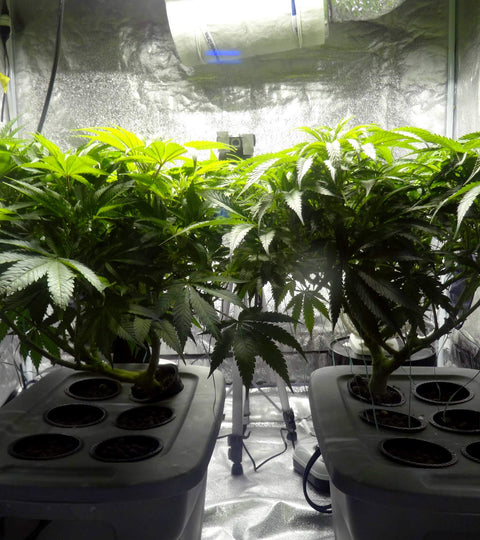What Are The Most Essential Tools for Home Growers?
Did you know that in seventeen states and the District of Columbia you can grow your own cannabis for personal use?
Cool. But why would anyone want to grow their own cannabis? And isn’t it difficult? I wouldn’t even know how to get started...
Growing your own cannabis is certainly not everyone’s cup of tea. However, it does offer a number of benefits.
Some medical cannabis patients have compromised immune systems. Pesticides, fungicides, miticides, fertilizers, and other potentially hazardous substances are often used in the cultivation process, and not all states require transparency or incentivize caution in this regard. When you grow your own cannabis, you can choose to omit any substances that aren’t simpatico with your immune system.
Another benefit of cultivating cannabis for personal use is that you can save money. While there are startup costs that might be tough for those on a tight budget, you can break even if you stick with it for a harvest or two (or sometimes three). After that initial period, you can move much further into the black.
And it’s hard to argue with the fact that it’s just plain fun to grow cannabis!
Want to give it a go? Then you’re going to need some materials. We’ve prepared a list of eight of the most essential tools for home-growers to help you get started:

pH Pen
A pH pen is important for any grow style (soil, soilless, hydro) because having the right pH will allow your plants to uptake the proper nutrients. Too high or low a pH will result in a mess of deficiencies. While organic methods can be more forgiving, it is still best to pH your nutrients before feeding. A pH pen is reusable, inexpensive, and a tool you’ll use every day in your garden. Be sure to also get your pH up and pH down additives, as well as a bottle of electrode storage solution (to store and protect your pH pen).
LED Lighting
Most home-growers will be using lights. While there are many tried and true high-intensity discharge (HID) lighting options, these are much less efficient than the light-emitting diode (LED) options. These days, the technology has expanded to allow LEDs to reach—and in some cases exceed—the light spectrum put out by high-pressure sodium (HPS) and metal halide (MH) bulbs. Beyond using less electricity for similar output, they also give us much less heat, which does wonders for efficiency due to savings on cooling and air flow.
Smart Pots
Smart pots are a fabric-based potting option for container plants; they have been proven to be more effective than traditional pots. Smart pots allow more airflow among the root system and result in healthier roots and greater rates of growth. They are also reusable, washable, inexpensive, and sustainably made.
Shielding Sunglasses
No matter what kind of light you have in your garden, if it works for plants, it’s likely bad (i.e. damaging) for your eyes. Enter sunglasses for growers. These are designed to block infrared radiation (IR) and ultraviolet (UV) rays. Shielding sunglasses re-color your vision so that your grow looks “normal,” instead of a wash of orange or violet light, depending on your setup. This is an essential tool for any indoor grower.
Sticky Traps
This is probably the cheapest and least intrusive method for pest control. Even though you’re growing indoors, that doesn't mean you’ll be immune to bugs. In fact, they’re quite common. Adding some sticky traps around the base of your plant will catch many of the jumping and flying insects rather efficiently. The best part is they also act as an indicator that you do in fact have pests. Ideally, you'll place them in your grow medium and they will stay clean until the end of the grow. However, if you start to catch a few miscreants, you might need to take action with an integrated pest management (IPM) treatment.
Spray Pump
Foliar feeding is a great way to improve your crops. It’s also the most common method for giving your plants an IPM treatment. While a simple spray bottle might do, a pumped bottle will ensure an even covering of solution on your plants and save your hand from cramping after hundreds of squeezes. This bottle by SOLO is one of our favorites, although there are many out there that are similar. It has splash protection, a turnable nozzle to adjust the flow and size, and is built like a tank.Heat Mat
An essential for sprouts and young plants, a good heat mat will ensure that they stay warm and healthy. Too much light at this stage can kill young plants (and that light is where they get a lot of their heat). Depending on your space, you may need a little more warmth where it counts. A heat mat will ensure that your soil temperature remains at the optimal level.
Dome
The companion to the heat mat, a dome tray is great for young plants when you want to keep the humidity up very high. Add a little water, put a heat map underneath, and you'll be just where you need to be (80-98% humidity). This is a great tool for seedlings or clones.

